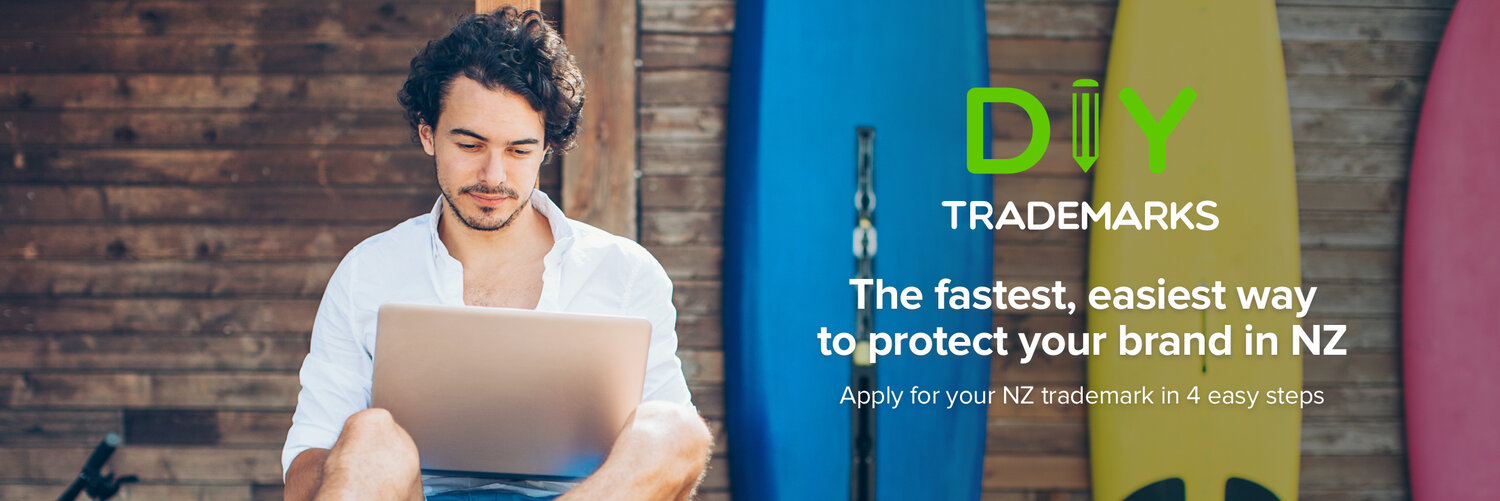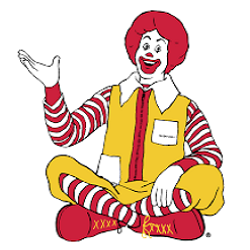Trademark definition
Your trademark may be your most valuable business asset!
Often referred to as a “badge of origin”, a trademark is a unique signifier - generally a symbol or word(s) - that identifies your goods or services and distinguishes them in the marketplace.
A trademark is a form of intellectual property, and its purpose is to identify the source of a business’s products or services. A trademark registration is a right granted by the state that gives the owner the exclusive right to use the mark for its products or services.
Your trademark could include words, colours, logos, shapes, sounds, smells or any combination of these. Most often, a trademark is an image or word(s).
Legal trademark definition
In New Zealand, Section 5 of the Trade Marks Act defines a trade mark as:
… any sign capable of:
i. being represented graphically; and
ii. distinguishing the goods or services of one person from those of another person.
Why is a trademark important?
The word ‘brand’ comes from the farming practice of branding a distinguishing mark onto livestock to identify them from the stock of other traders.
Over the years, branding has become a powerful tool to distinguish one product from another. Do you prefer Whittaker’s or Cadbury’s chocolate or Spark or 2Degrees cellular services? Which brands of sport shoes, jeans or motor cars do you prefer?
Most businesses or individuals register a trademark to protect their brand from competitors who offer similar goods or services. However, the exclusive right to use your trademark that comes from registering your trademark means that your customers come to identify your unique products or services and the characteristics and quality associated with your brand.
Trademarks can be registered or unregistered
You can identify an unregistered trademark in your marketing collateral by using the superscript TM symbol: ™. You may only use the superscript R symbol inside a circle, ®, if your trademark has been registered by the intellectual property office of the territory where you’re using your mark.
Trademarks registered with the intellectual property office enjoy legal trademark protection, but in that country only. You need to register a trademark in every country where you want legal trademark protection. Read more about when to use ™ and when to use ®.
What kind of trademarks are included in the definition of a trademark?
While a trademark is most commonly a name, logo or tagline, there are other types of trademarks too.
According to the Trade Marks Act, the definition of a trademark as a distinguishing sign may include a brand, colour, device, heading, label, letter, name, numeral, shape, signature, smell, sound, taste, ticket or word. “Sign” also includes “any combination of signs”.
It’s almost any distinctive feature that allows your brand to be distinguished in the marketplace by consumers.
1. Word or name trademarks
A word mark protects a name or phrase in any font, size, colour or design element, regardless of how they are displayed. They can be very powerful business assets - think BP, GOOGLE, NESTLE, MICROSOFT.
Different word marks can be used to identify different products or services owned by a company.
For example, the Coca-Cola Company owns the trademarks for COKE ZERO, SPRITE and FANTA.
A local example is THE WAREHOUSE GROUP which owns THE WAREHOUSE and WAREHOUSE STATIONERY, WAREHOUSE MOBILE, TORPEDO 7 and other trademarks.
2. Trademarking a slogan
Businesses sometimes also choose to trademark their slogans, which identify (or have come to identify the business as the source of the products or services.
For example, you probably know some of these slogans:
KFC – FINGER LICKIN GOOD
L’OREAL – BECAUSE YOU’RE WORTH IT
BRISCOES - YOU’LL NEVER BUY BETTER
3. Combined marks - combinations of words and images
Combined marks include words and images or stylised elements. Trademark registrations for combined marks protect the overall look and visual elements - they don’t provide specific protection for the word components in the same way that registrations for word marks do.
Examples:
If your mark contains words that cannot be trademarked themselves (for example, if they are descriptive or generic), or if you wish to protect aspects of the design of your trademark, it can be beneficial to register a combined mark incorporating your word mark together with stylised elements. This way, you may be able to obtain a degree of quasi-protection for your word mark (and put others off from adopting similar marks).
There are benefits in all types of trademarks. For maximum protection, if at all possible you should try to register your word mark in plain text and any distinctive visual logos separately.
A device mark is a logo or image that acts as a symbol identifying your products or services - think the Nike swoosh or Apple’s image of an apple with a bite mark taken out of it.
While a word mark protects a name no matter how it’s displayed, an image or stylised mark protects the specific visual elements of a trademark.
We all recognise visual symbols that have become well-known representations of brands, such as:
Examples:
Characters or brand mascots
Some companies have succeeded in registering characters that are iconic mascots that represent their brands.
Technically, these are also symbols or devices that represent a brand.
Examples:
The character images of Snap and Pop are registered trademarks of the Kelloggs company in New Zealand, who also hold the trademark for the words SNAP CRACKLE AND POP.
Ronald Macdonald is another well-known mascot. Various forms of RONALD MCDONALD and the costume and clown-faced persona are registered trademarks of McDonald's in countries around the world.
5. Colour trademarks
Colour trademarks are among the more difficult trademark registrations to obtain. An applicant must show convincingly that the use of a specific colour (or colour combinations) over time has led consumers to identify that colour as an integral aspect of their brand. Only a handful of colour trademarks have been registered in most countries of the world.
Examples:
Tiffany & Co, a jewellery business, has a trademark registration for the duck-egg blue colour in New Zealand and abroad. The colour, identified as Pantone 1837, has been used by the company since 1845. It was first used as the colour of the cover of their Blue Book – a catalogue of Tiffany’s annual collection of exquisitely handcrafted jewels. The company’s trademarked Tiffany Blue Box® is this shade of blue.
Another example of a colour that is trademarked in New Zealand is Cadbury’s purple, or Pantone 2685C, which is registered for block chocolate. In other countries the company has faced trademark lawsuits as their competitors (keen to use purple for their own chocolate products) have challenged the validity of Cadbury’s colour registration.
Worldwide, relatively few colours have been registered as trademarks. In the United States, Post-it trademarked the canary yellow colour of their famous restickable notes and a few other companies have trademarked their brand colours.
6. Trademarked shapes and ‘aspects of packaging’
It is possible to register 3D shapes as trademarks where the shape is or has become a distinctive symbol in its own right - and a number of I businesses have registered trademarks for their distinctive packaging, including
Toblerone’s triangle packaging for chocolate products
The shape of the Coca-Cola bottle
The shape of the Toilet Duck bottle
New Zealand examples are the successful registrations of the shapes of two of Griffins’ biscuits – MallowPuffs and Squiggles in 2019 and 2020 respectively.
7. Scent and sound trademarks
These are possibly the rarest of trademarks. In New Zealand, The Warehouse owns a trademark registration for its jingle, "The Warehouse, The Warehouse where everyone gets a bargain", and Pizza Hut has registered a trademark for its phone number jingle, "oh eight hundred eighty-three eighty-three eighty-three".
In Australia, the eucalyptus scent used for a brand of golf tees was the first scent trademarked, a good 14 years after their Trade Marks Act allowed for scents to be registered.
The United States seems to be leading in this category of somewhat quirky trademarks. A footwear chain, Flip Flop Shops and a telecommunications supplier, Verizon each have registered trademarks for the scents that they use in their stores. A bubblegum flavoured scent for sandals has been registered by a footwear company. The piña colada smell of a brand of ukuleles, the strawberry scent of a brand of toothbrushes and 3 flavours of combustion engine lubricants have also been registered.
These trademarks have been registered as they are not the essence of the product (compared with say the fragrance of a particular perfume product - which has yet to be deemed registrable) but rather they are the scent that distinguishes the company’s goods or services from other similar products.
It’s a complex process to register non-traditional trademarks like shapes, colours, packaging and sounds, and so you should use the services of a professional trademark lawyer for applications for these kinds of trademarks.
For less complex trademarks like words and logos, you can apply to register them online yourself, in 4 easy steps: How to Get a Trademark









